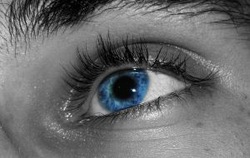
http://www.oliviasvision.org/
It’s hard for most kids to suit in or feel “normal” in school, especially in high school. Being afflicted with an unfamiliar medical condition may add to this feeling of alienation. For children who're suffering from a medical condition that hasn’t acquired as much exposure as most health problems, life in class might be twice as miserable. Just how can schools and instructors help comfort the academic life of children with a condition known as uveitis?
It’s essential, initially, to determine if the condition is affecting the student. If educators and university administrators know the signs and symptoms of uveitis, it'll eliminate any quick judgments on the student’s capability to learn and sudden reprimands for their behaviour. For instance, there's a probability that a student who is unable to read the formula on the board or the pages in a book isn’t just being lazy, or a student that insists on putting on shades indoors isn’t simply being wilful.
It’s essential, initially, to determine if the condition is affecting the student. If educators and university administrators know the signs and symptoms of uveitis, it'll eliminate any quick judgments on the student’s capability to learn and sudden reprimands for their behaviour. For instance, there's a probability that a student who is unable to read the formula on the board or the pages in a book isn’t just being lazy, or a student that insists on putting on shades indoors isn’t simply being wilful.
Instructors must effort to learn what is uveitis. Essentially, it's an inflammation of the uveal tract and it affects one or more areas of the eye. The National Health Service (NHS) approximates that one in 4,500 individuals in England is going to be suffering from the eye inflammation yearly. Diagnosis is most common among people between the ages of 20 and 59, however children could be diagnosed as well. Symptoms, which vary according to the section of the eye that is afflicted, include blurred or cloudy vision, sensitivity to light, an aching red eye, small pupil, the iris having a somewhat different colour than normal, seeing shadows that move through the field of vision (floaters), headaches, loss of peripheral vision, and seeing of flashing lights.
For pupils that have recently been diagnosed, teachers and schools can do much to assist the child. For pupils with light sensitivity, they can be motivated to put on sunglasses or a hat when they’re outdoors. Indoors, the glare from the overhead lights may be lessened using yellow acetate on white paper. Photophobia, while decreasing vision, can also hurt.
Inside the classroom, instructors can create a seat plan where students with the eye condition is right up front and near the board. Organisations that concentrate on the eye inflammation even recommend for instructors to make use of materials that provide additional contrast such as coloured chalk on the board. Additionally, the teacher may make particular modifications to the way he or she holds the lesson. Rather than having a book read aloud by the students, the instructor would bring in an audio version of the book. Audio books not just develop the entire class’ listening skills, but it also helps the student with the vision problem prepare for the book report or complete the reading assignment.
It is true that when one knows better, you do better. When schools and teachers have a good knowledge of the eye condition by obtaining as much uveitis information as they can, they’ll be better equipped to understand the student and offer tips on how to ease the child’s life in class.
About the author: Smiley Carillo is a uveitis survivor. She is very thankful to OliviasVision for their assistance during the disease process. With their help, she never felt she was alone and that she became fully aware of all the information about this condition.
For pupils that have recently been diagnosed, teachers and schools can do much to assist the child. For pupils with light sensitivity, they can be motivated to put on sunglasses or a hat when they’re outdoors. Indoors, the glare from the overhead lights may be lessened using yellow acetate on white paper. Photophobia, while decreasing vision, can also hurt.
Inside the classroom, instructors can create a seat plan where students with the eye condition is right up front and near the board. Organisations that concentrate on the eye inflammation even recommend for instructors to make use of materials that provide additional contrast such as coloured chalk on the board. Additionally, the teacher may make particular modifications to the way he or she holds the lesson. Rather than having a book read aloud by the students, the instructor would bring in an audio version of the book. Audio books not just develop the entire class’ listening skills, but it also helps the student with the vision problem prepare for the book report or complete the reading assignment.
It is true that when one knows better, you do better. When schools and teachers have a good knowledge of the eye condition by obtaining as much uveitis information as they can, they’ll be better equipped to understand the student and offer tips on how to ease the child’s life in class.
About the author: Smiley Carillo is a uveitis survivor. She is very thankful to OliviasVision for their assistance during the disease process. With their help, she never felt she was alone and that she became fully aware of all the information about this condition.
 RSS Feed
RSS Feed